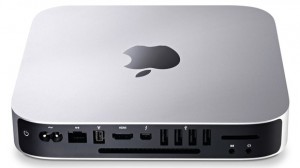Pro Tools 11 Pioneer — Part Two: Building a Buddy System
I’d like to start by thanking everyone who read my last article. I’m humbled by all the compliments, and feedback. I felt like a mountain climber ready to scale Everest, as friends and family cheered me along. People were calling me a pioneer! Never an early adopter, I asked myself “why do I always wait around to try out new cool stuff?”
But as I waited on delivery of my new HDX card, I poked my head out to see how the other early adopters faired. Through the portal of my Web browser, I witnessed a tidal wave of anger, mostly pointed at ILOK.
The great ILOK snafu of 2013 wasn’t like a software crash, it was like a stock market crash. One would think an angry mob of pro-audio’ers was ready to occupy PACE. I envisioned a crowd of revved up engineers, deprived of sun and fashionable clothing, holding picket signs that read slogans like “my entire system drive crashed” or “I heard Eddie Kramer and CLA never use ILOK”.
A Stranger in a Strange Land
Meanwhile at Apple, I watched as a new pint-sized Mac Pro was rolled out at WWDC. If you don’t know about the WWDC, it’s Apple’s “World Wide Developers Conference” and its kind of like crossing the Apple Store with a WWE wrestling event. A group of Apple developers gather in an auditorium, to euphorically cheer product news announced by a score of Apple executives.
So here I am, wearing my new technologist badge, feeling less like a pioneer, and more like a guy ready to go and kick some rocks. Who needs a computer with PCI slots anyway? Especially when you can get one with two ginormous video cards. Powerful enough for space travel! GPUs with the strength to propel a cinema display from Co-Op city to Cupertino!
Actually, Mr. Apple, I do. That’s right, me. The guy with the new HDX card, and the TDM cards, and oh ya the UAD card, … I need a computer with PCI slots. I’d personally trade the extra 4k video card they’re throwing in, for two internal speakers that don’t sound like an NS10 that’s been dipped in hot glue.
All of the sudden pioneering felt more like a trip to the DMV. So much for the trail blazing, I felt like dusting off a tape machine.
The sum of these parts lead to one conclusion: Build a Pro Tools 11 rig, separate from my TDM rig. Since Apple hardware will no longer come with PCI slots, the new rig would need to have a computer with Thunderbolt, as well as an expansion chassis.
Moreover this two-system plan will allow me to work in TDM when required with minimal changeover. So I hit the Net, and bought a Mac Mini and a Magma “Express Box 3”.
So check me out, Pro Tools Pioneer. I rubbed a few c-notes together and out came a Mac Mini, hooked up to an HDX card. Surely I’ve just earned my spot in the engineer’s Hall of Fame.
Getting to Know 11
So is it any good? Yes. First of all, PT 11 is faster … what feels like infinitely faster. The 64-bit architecture has clearly made an impact on the amount of work the DAW can do, and the speed it can do it in.
The native power that the newer computer and the 64-bit software provide have definitely exceeded my expectations. I can imagine working without additional DSP, unless I’m in a tracking session. I can’t say for sure, but it feels like I’d hit a wall with my HD5 rig running v10 on an 8 core, substantially before I would on the 11 rig running on a Mac Mini.
V11 improves not just from a performance standpoint, but also at its work-flow. Little things like the I/O setup, PI preset admin and AAE are smarter. New features like global plugin bypass are first in class. The GUI looks awesome … going back to v10 from v11 is a total drag, if only because v11 is so much prettier.
The obvious improvement is the metering and bounce to disk, which are light years ahead. For example you can simultaneously bounce multiple formats, while automatically uploading your bounce to a file serve. You can also automate exports directly to your iTunes library, and the session hierarchy now comes with a dedicated bounce folder.
On top of all this, is the speed associated with offline bounce. Now I know Pro Tools is late to the offline bounce party, so the populous who makes this critique has a point.
But now that Avid has implemented it, Pro Tools does it better than the rest. Printing stems in 11 now takes a fraction of the time, not only because of offline, but because of Multi-source bounce. Up to 16 multi-channel bounces can be made simultaneously, all at offline speed. Finally smart improvements like the ability to right click an aux send, to initiate a bounce from that source should not be overlooked.
For someone like me, who is constantly making bounces and uploading them, the new software is much more efficient. If your rate scale is based on a per-song basis, the increase in productivity from this one feature alone will help recoup the software purchase in a reasonable period of time.
The meters have advanced as well and for the first time they are built on professional standards. For engineers mixing for film and TV, the ad-hoc 3rd party metering plugins you’ve come to rely on, are no longer mission critical. Gain reduction metering, variable ballistics, and per-fader type customization are all best in class.
So as this article comes to a close, I am brought to the grey cloud hanging over the current Avid offerings: lack of major third party plugins. It’s an issue, with an underlying form that requires some deeper investigation. Please join me next time, as I do my best to give the software a deeper look, while shedding some light on the ensuing issues complicating plugin availability.
Zach Hancock is a NY-based engineer and producer. He works as chief engineer at Downtown Music Studios, where he works with a wide range of artists spanning from Mac Miller to Mikky Ekko.
Please note: When you buy products through links on this page, we may earn an affiliate commission.









DPrty
September 1, 2013 at 1:32 am (12 years ago)I can build one hell of a windows machine for the price of a Mac Mini and Reaper just kills ProTools.
“But now that Avid has implemented it, Pro Tools does it better than the
rest”
That’s an opinion.